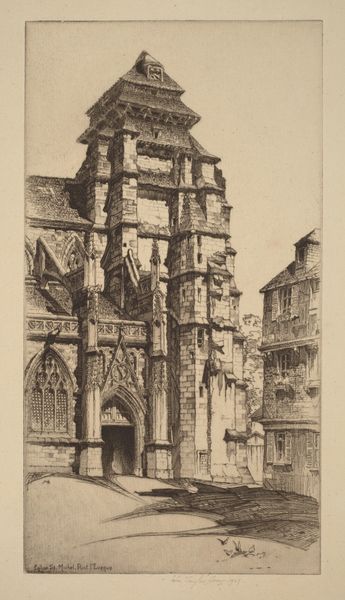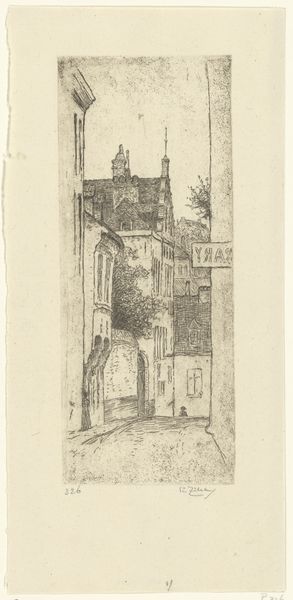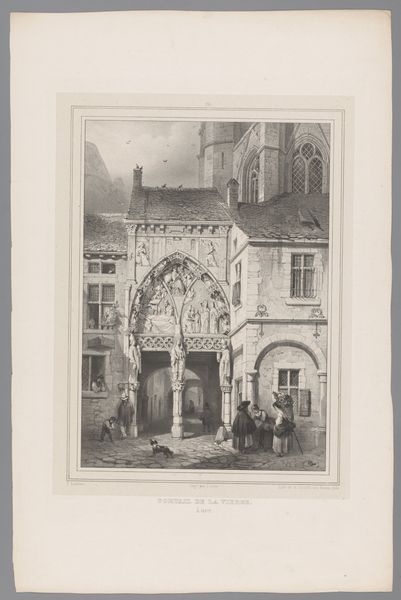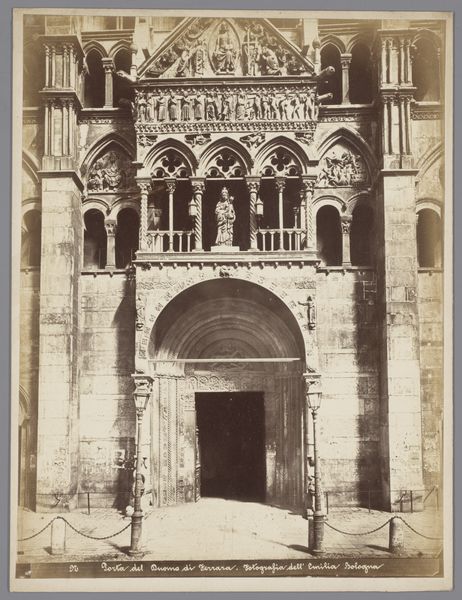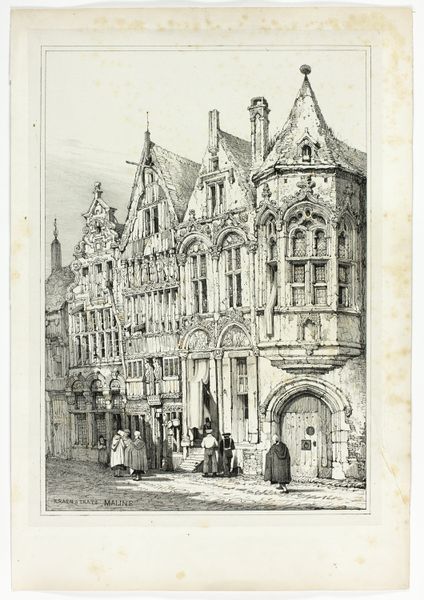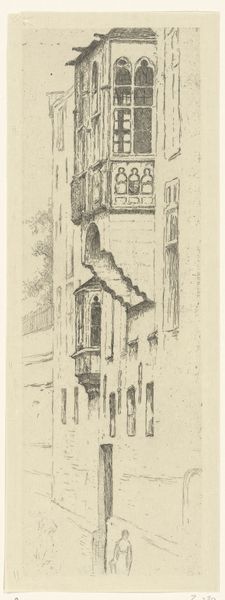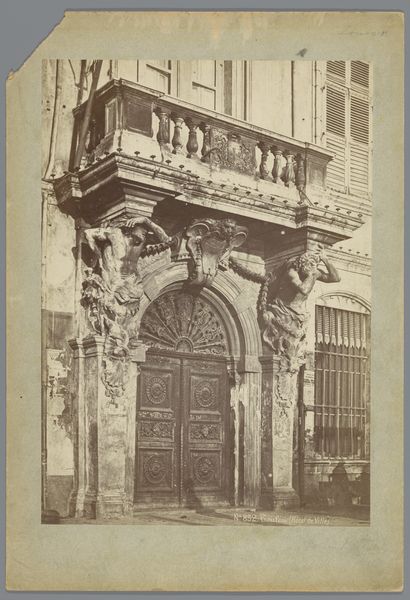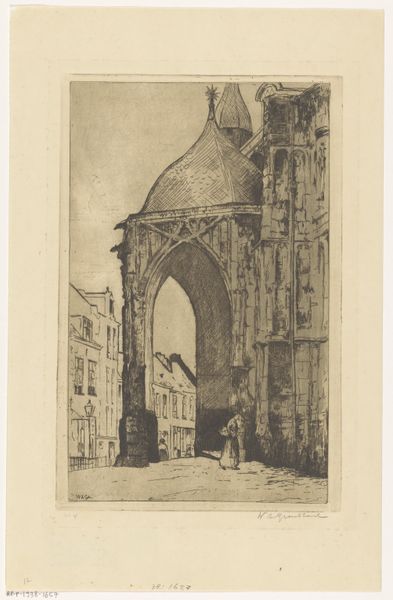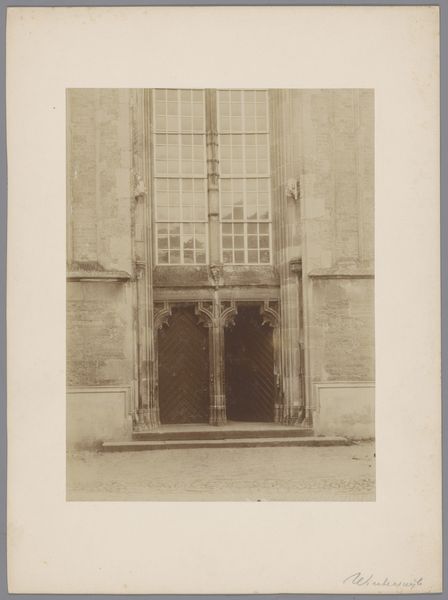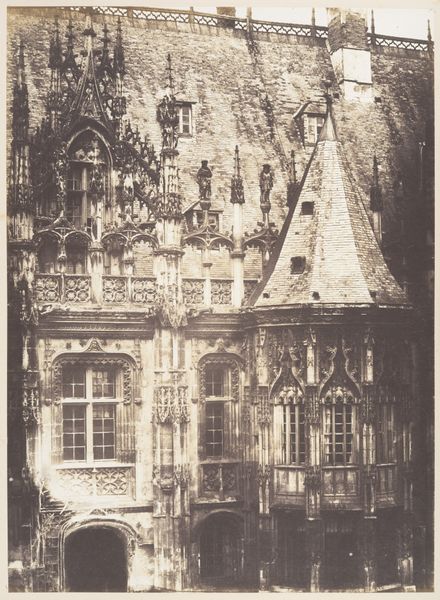
drawing, print, etching
#
drawing
#
medieval
# print
#
etching
#
landscape
#
cityscape
Dimensions: height 170 mm, width 122 mm
Copyright: Rijks Museum: Open Domain
Willem Adrianus Grondhout made this print of Bruges using etching, a printmaking technique, sometime between the late 19th and early 20th centuries. With etching, the artist covers a metal plate with a waxy, acid-resistant ground. They then scratch an image into this ground, exposing the metal beneath. Next, the plate is submerged in acid, which bites into the exposed lines. By carefully controlling the depth of the etch, Grondhout could create a wide range of tonal effects. The dense network of lines creates a sense of depth and texture, evoking the timeworn surfaces of the architecture. You can see that this printmaking process is intimately connected to the urban environment. The repetitive gestures of scratching and biting mirror the labor-intensive processes of construction. This helps us to see how Grondhout was not just representing a place, but also subtly commenting on the work and time embedded in its very fabric.
Comments
No comments
Be the first to comment and join the conversation on the ultimate creative platform.
